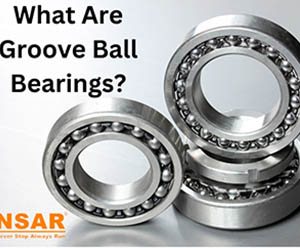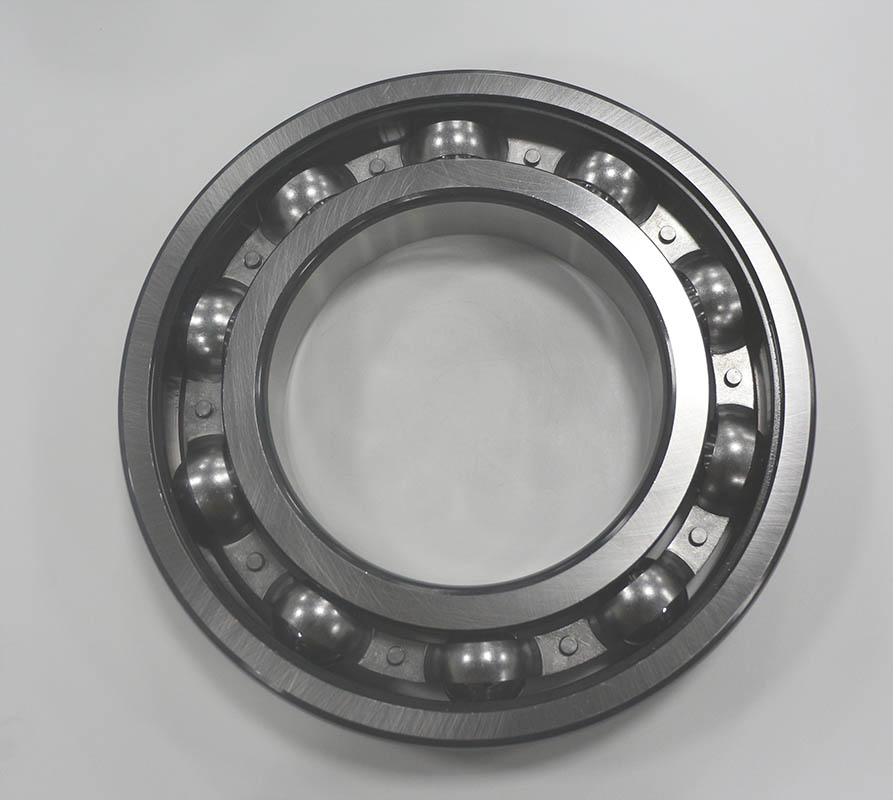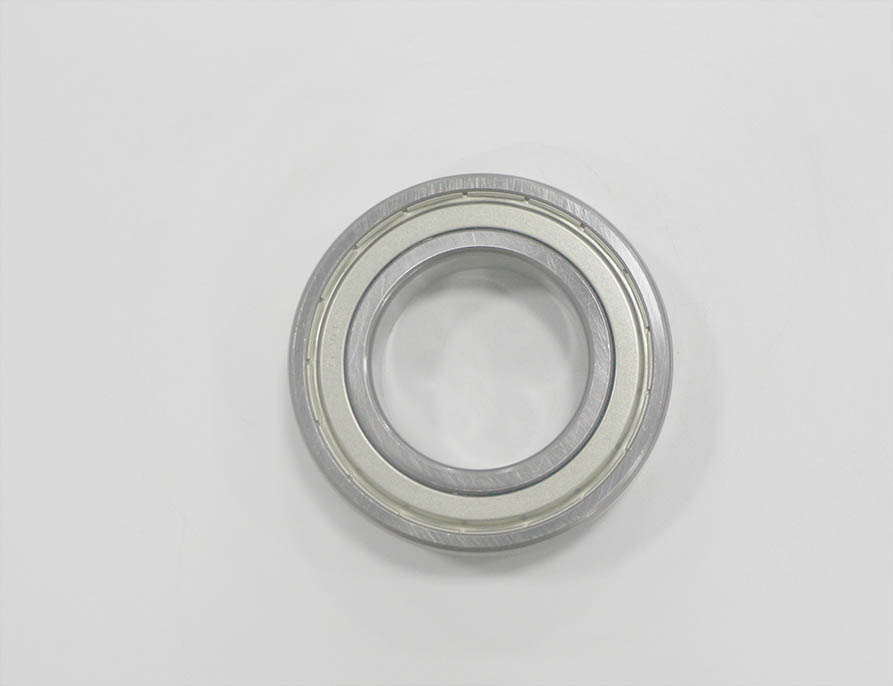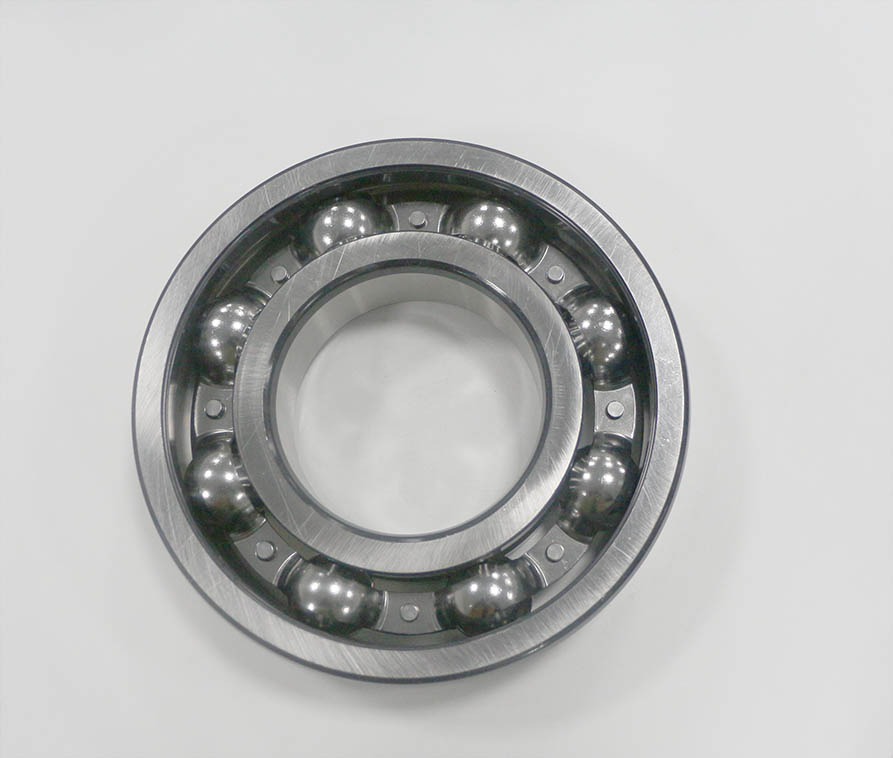
Everything you need to know about deep groove ball bearings
Are you looking for bearings that don’t cost you much but serve a longer period?
Well, your search should come to a rewarding end here because you may be looking for deep groove ball bearings! Deep groove bearings are critical machinery components that silently serve multiple purposes, enabling smooth and efficient motion in a myriad of applications. Their deep raceway grooves on both the inner and outer rings are a huge factor that differentiates them from other bearings.
If you’re also looking for details on deep groove bearings, then look no further. In this comprehensive guide, we will delve into the details of these bearings, including the basics of ball bearings, types, future advancements, and much more.
What are deep groove ball bearings?
Deep groove bearings are rolling-element bearings that are designed for handling radial and axial loads. The name of these bearings comes from deep ball grooves that run along the inner and outer rings. This allows them to support high radial loads while simultaneously accommodating some axial loads.
In the design of groove ball bearings, they have a relatively low profile. They have a small gap between the balls and the inner and outer raceways. This design reduces friction and allows high-speed rotation, rotation, generating low heat.
There are a variety of configurations of these bearing types, including single-row, double-row, and angular contact designs. You can seal or open them according to the application requirements.
Overall, ball bearings are efficiently designed devices that serve a variety of industries excellently. They are essential components in many different types of machinery and equipment because of their reliability and durability, which saves lots of time and effort on maintenance and replacements.
Components of the Design and Construction of Deep Groove Ball Bearings
There are four major components to the design and construction of ball bearings. Below are these major components:
Inner and outer rings: The part of the bearings that rotates within the shaft is the inner ring. While the ring that stays stationary is the outer ring. These rings are usually made of steel. These are precision-machined for a proper fit and smooth operation.
Rolling elements: These are steel balls that roll between the inner and outer rings. They allow smooth rotation and minimal friction. The number and size of the balls vary. The bearing’s size and load capacity determine the number and size of these rolling elements.
Cage or retainer: The third major component of deep groove ball bearings is the cage or retainer. It keeps the rolling elements in an even space. The retainer also prevents steel balls from colliding with each other. Stamped steel, brass, or plastic is often used in making this component. Cage comes in a huge variety of designs, like one-piece snap-in retainers and multi-part cages.
Seals or shields: These are protective layers to protect bearings from contamination and moisture while retaining lubricants. Seals are made of rubber or synthetic materials that protect bearings from contamination, but they produce more friction than shields. On the other hand, shields are often made with steel or plastic, so they are less effective against contaminants but produce low friction.
The design and construction of deep groove ball bearings have a significant role in their performance and durability. This is their design, which makes them a viable choice for many applications. With the right combination of these components, engineers can build bearings that can operate under harsh conditions and withstand heavy loads at high-speed rotations.
Types of Deep Groove Ball Bearings
There are three major types of ball bearings. Let’s explore these bearing types one by one:
Single-row deep groove ball bearings: These are among some of the most popular bearings that are used in several applications. These bearings are built with an inner and outer ring as well as a single row of steel rolling between them. This is their simplified design that provides excellent radial and axial load-carrying capability in both directions.
The design of these bearings makes them suitable for high-speed operation and low-noise performance in durable or reliable ways. These bearings are also effortlessly easy to install and maintain because of their straightforward construction.
Double-row deep groove ball bearings: These bearings are designed to meet higher load capacity needs. They feature two rows of balls. These balls roll between the inner and outer rings, which improves their performance under heavy loads. In addition to this, double-row bearings also produce less noise as compared to single-row designs.
This makes them an ideal choice for applications that require quiet operation, like automotive transmissions and medical equipment. This type is also highly reliable. It can handle continuous speeds up to 16000 RPMs without any significant wear or deterioration over time.
Four-point contact ball bearings: This besting type is specifically designed for robotics, aerospace, precision instruments, navigation systems, agricultural machinery, and medical devices with high-precision applications. They contain four contact points between the outer ring’s and inner ring’s raceways to provide excellent support under heavy loads.
Everything happens at low friction, even at high speed. All functions happen without suffering from premature wear or failure, even in harsh environments.
The precise nature of these bearings offers superior accuracy when controlling linear motion components like pumps, compressors, valves, motors, etc. Levels of vibration also remain low throughout their entire operating range. This makes these bearings an ideal choice for several specialized applications.
Construction Material for Deep Groove Ball Bearings
Performance and longevity are linked to the choice of construction material, just like most machines. The most common material used for the inner and outer rings is high-quality steel. On the other hand, steel, or other advanced materials are used to construct the balls.
We can find seals made of metal, but we need something environmentally friendly. So seals made of nitrile rubber compounds are great for different environmental conditions.
Advantages and Disadvantages of using Deep Groove Ball Bearings
Advantages
Ball bearings are commonly used bearings. They can handle both radial and some axial loads, as well as high operation speeds. They are commonly used in several devices, like conveyor belts and electric motors. Below are some of the major advantages of deep groove ball bearings.
Versatility: This is a huge plus point of this bearing type because it is designed to handle both radial and axial loads. This is a notable advantage that opens it to vast applications for bearing up. It makes these bearings a good option for a number of industries.
With a wider range of applications, deep ball bearings save you lots of work and money. The adaptability of deep groove bearings is the key that makes them a versatile choice that serves many different uses.
Cost-effective: Deep groove ball Bearings have way less friction than other types of bearings. This leads to a lower operating temperature. In other words, this extends the lifespan of the ball bearing. You will need less equipment as it won’t fail or need replacement. Furthermore, with reduced friction torque, the energy required to run equipment like compressors and fans will also be lower, which saves money on bills.
Reduced Upkeep: The ball bearing design is extremely simplified. Torque and operating temperature are also low, which increases its lifespan significantly compared to other bearing types. Once they’re installed, you won’t have to apply extra lubrication either. Simply put, it will need fewer work stoppages for maintenance. Reliability and near self-sufficiency make groove ball bearings a good choice regardless of where they are used.
Reduced noise and vibration: Deep groove ball bearings reduce noise and vibration, which makes them highly effective for high-speed applications. Reduced friction and contact between the bearing parts lower the sound levels. As a result, vibrations caused by bearing noise become significantly lower. This makes these bearings a highly effective choice for many noise-sensitive applications.
Increased durability and reliability: Deep groove bearings can withstand high temperatures and high speeds without losing much performance. These bearings can cope with misalignments.
These are some of the major advantages of these bearings that make them stand out from other bearing types. Owing to these advantages, they are commonly used across a diverse range of industries.
Disadvantages
Ball bearings are widely used around the world in several devices. Their benefits certainly outweigh their disadvantages; however, they also have disadvantages that you should consider when selecting them for a particular use.
Do not operate the best under heavy loads: Deep ball bearing point contact prevents them from operating the best under extremely heavy loads.
Temperature Sensitivity: The performance and lifespan of ball bearings are badly impacted by extreme temperatures. This leads to the careful selection of materials and lubricants that can make them capable of delivering value in those situations.
Noise and Vibration: Ball bearings can generate noise and vibration in high-speed applications. This may require you to take additional measures to reduce noise and vibration damping.
Factors that Influence the Quality of Deep Groove Ball Bearings
Good quality and performance are linked to several contributing factors. These influencing factors include:
Design: If the dimensional accuracy of the bearing is closer to the design standards, it is likely to perform better.
Steel grade: The right composition of the steel utilized makes bearings durable and long-lasting.
Heat treatments: The heat treatment process makes materials sturdier and longer-lasting because they become harder.
Grinding: The grinding cycle makes the bearing’s inner and outer ring smoother. That is why bearings need to be ground over many cycles.
Major Applications of Deep Groove Ball Bearings
These bearings are widely used for their versatile and reliable design. Their use across multiple applications is quite common. Major applications of the ball bearings include:
Automotive Industry Applications: The automotive industry is huge, considering its production spiraling to millions of units each year globally. However, they don’t have to use different bearings in each vehicle because deep groove ball bearings can accommodate several applications. These bearings are widely used in the automotive industry in wheels, transmissions, and engine-like applications. They can handle high speeds and heavy loads, which makes them an ideal choice for the automotive industry.
Industrial Machinery Purposes: Ball bearings have several applications in industrial machinery and equipment. Pumps, compressors, conveyors, and machine tools are some of the major applications. They can withstand extreme operating conditions, so they’re a viable choice for these applications. All operations happen, offering reliable performance and durability.
Applications in electrical motors: These bearings are commonly used in electrical motors because they have low friction and noise generation. This ensures a smooth and efficient rotation.
Aerospace and defense applications: Aerospace and defense systems generate high temperatures that require bearings that can withstand these extreme operating conditions. So ball bearings help in these conditions, withstanding high temperatures and high loads. Their versatile nature makes them an evergreen choice for aircraft engines, landing gear systems, and missile guidance systems.
Household items: These bearings are widely used in washing machines, blenders, and power tools. Household items often need more quiet machinery. So these bearings help ensure reliable and quiet operations.
Overall, ball bearings have been of huge benefit in several industries for their reliable, durable, and long-lasting operations. They are proving to be an important component of various applications, from aerospace to household items. Their unique designs further make them an amazing choice for a diverse range of applications.
How to Select the Best Deep Groove Ball Bearings
There are certain criteria to select the right bearings, just like you may read about the buying guide for any machine. Knowing and understanding these criteria can help make an informed decision so the product serves befittingly. Follow the criteria detailed below to select the right bearings:
Check load capacity: Bearings also bear load in the machine. You need to choose the right bearings that are suitable for the application.
Operating Conditions: This is an extremely important thing. Engineers need to make sure of the type of load (radial or axial) and any shock or vibration that bearings can experience. This will make it suitable according to the usage.
Speed: Deep groove ball bearings are available in different speed ratings that are associated with a variety of uses. You have to decide which speed requirements they need to accommodate. The suggestion is to choose a bearing whose speed matches the application’s requirements.
Temperature withstanding: The temperature range has lots to do with the performance and lifespan of the bearings. Operations of bearings can also be impacted by environmental conditions like humidity, dust, dirt, and corrosive substances. So make sure you choose bearings that can withstand any uncertain level of increase in temperature.
Proper alignment: Make sure the shaft and housing dimensions are aligned to the bearing’s internal and external fits and are properly aligned with each other. This can help prevent excessive wear.
Right lubricant and maintenance: The right lubricant saves bearings from wearing down, as at high temperatures, lubricant can break down if the right one is not used.
Make careful consideration of these factors, and you will reach an informed decision!
How is the Future of Deep Groove Ball Bearings?
The future of ball bearings is looking to bring more advancements than in the past. Technological use is also going to make them more diverse, as it is redefining almost every industry!
However, we can expect these enhancements in the upcoming years:
Material Technologies: Material advancements are coming up that will likely make bearings better at performance and durability. This will reduce wear and friction. Operations in harsh conditions will become even easier.
Use of smart systems and sensors: The use of smart systems and sensors is potentially going to introduce us to real-time monitoring and feedback on bearing performance. This will improve reliability as well as preventive maintenance that will make these bearings longer lasting.
Better lubricants and dealing technologies: Efficiency and overall performance are going to be optimized with better speaking technologies and lubricants. Bearings will be able to withstand even more harsh temperatures and environmental conditions.
In the near future, these bearings will function at high performance, durability, and efficiency, all at the behest of advanced material technologies, smart systems, and new lubrication and sealing technologies.
These advancements will make bearings more broad in their applications. More industries will be able to use these ball bearings, enabling machines to have more reliable and optimal operation.
Key Takeaways
Deep Groove Ball Bearings are simplified designs of bearings that bring ease at an affordable price to several applications across different industries. Key takeaways from the detailed discussion of these versatile and reliable bearings are:
. They are great at handling both radial and axial loads with low friction.
. Inner and outer rings, balls, cages, and seals or shades are major components of these bearings.
. There are three major types of deep groove bearings: single-row deep groove ball bearings, double-row deep groove ball bearings, and four-point contact ball bearings.
. High-quality steel, and nitrile rubber compounds are different construction materials for these bearings.
. Deep groove ball bearings are versatile, cost-effective, require low upkeep, generate low friction, and are a reliable choice.
. They are commonly used in the automotive industry, aerospace, household items, etc.
. Check load capacity, operating conditions, speed requirements, temperature factors, etc. to select the right bearings.
. The future of these bearings is also going to bring lots of diversity.
These bearings are widely popular for how they accommodate a variety of applications.
Concluding Thoughts
Deep groove ball bearings have become an important component of many small- to broader-level applications. This is mainly their versatile and reliable nature of design that makes them a feasible choice across various industrial and consumer applications.
They can withstand extreme operating conditions that stand them out as an optimal performance choice. Some may even call these bearings an integral part of efficient machinery. They have several advantages over other bearing types, like high-speed rotations and heavy loads.
However, these favorable results can even be optimized by learning to understand the details of these bearings. This will drive improvements in performance and lifespan.
Ball bearings are your perfect partner to propel your machinery to a seamless and efficient operating future. The future of these bearings is looking to bring more diversity to their overall design and performance.
Frequently Asked Questions (FAQs)
Should deep groove ball bearings be used for high load capacity?
Yes, these bearings are great for high-load-capacity operating conditions. They are designed to handle very high loads by utilizing their inner and outer raceways to remain rigid. These features make them an ideal choice for heavy industries like automotive transmissions, electric motors, pumps, and more.
What are the most common uses of deep groove ball bearings?
These bearings have become an important component of the automotive industry because they can withstand high loads and high speeds without causing excessive wear or heat generation. Similarly, these uses are quite common in electrical motors because they cause low friction and less noise.
How good is it to select the right bearing for high-speed applications?
High-speed machinery needs special equipment because it generates lots of heat, vibration, and stress. Only extraordinary components can withstand these extreme operating conditions. These machines need the right lubricant for bearings, as extreme conditions can cause the lubricant to break down or evaporate into the air.
However, you can avoid this situation if you choose the right lubricant. This will also have a positive impact on the longevity of these bearings. Load capacity, operating temperature, and maintenance are also important factors that need consideration, so make a wise choice!




